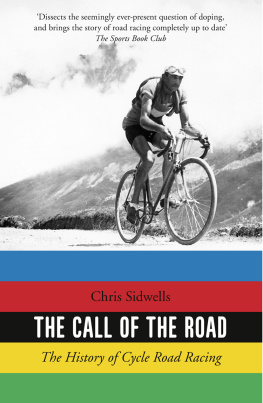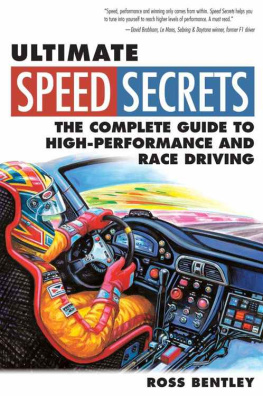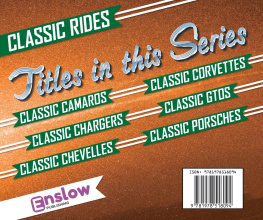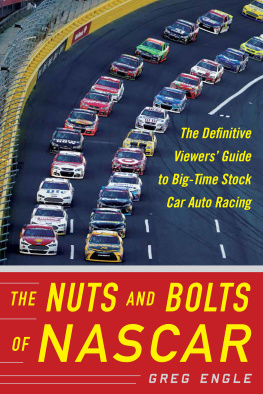Steve Zautke - Road America
Here you can read online Steve Zautke - Road America full text of the book (entire story) in english for free. Download pdf and epub, get meaning, cover and reviews about this ebook. year: 2014, publisher: Arcadia Publishing, genre: Non-fiction. Description of the work, (preface) as well as reviews are available. Best literature library LitArk.com created for fans of good reading and offers a wide selection of genres:
Romance novel
Science fiction
Adventure
Detective
Science
History
Home and family
Prose
Art
Politics
Computer
Non-fiction
Religion
Business
Children
Humor
Choose a favorite category and find really read worthwhile books. Enjoy immersion in the world of imagination, feel the emotions of the characters or learn something new for yourself, make an fascinating discovery.

- Book:Road America
- Author:
- Publisher:Arcadia Publishing
- Genre:
- Year:2014
- Rating:5 / 5
- Favourites:Add to favourites
- Your mark:
- 100
- 1
- 2
- 3
- 4
- 5
Road America: summary, description and annotation
We offer to read an annotation, description, summary or preface (depends on what the author of the book "Road America" wrote himself). If you haven't found the necessary information about the book — write in the comments, we will try to find it.
Located one hour north of Milwaukee in Wisconsins scenic Kettle Moraine, Elkhart Lakes Road America race course is one of the worlds most famous permanent road racing tracks. Dating back to 1955, the scenic race course has seen the finest in motorsports, such as NASCAR, open wheel, and sports cars, and the best in amateur racing. The track also hosts year-round activities for corporate outings, go-karting, motorcycle/driving schools, and even paintball.
Road America — read online for free the complete book (whole text) full work
Below is the text of the book, divided by pages. System saving the place of the last page read, allows you to conveniently read the book "Road America" online for free, without having to search again every time where you left off. Put a bookmark, and you can go to the page where you finished reading at any time.
Font size:
Interval:
Bookmark:


ROAD AMERICA

At the start of the 1960 Road America 500, Dr. Dick Thompson (No. 11), in Bill Mitchells Sting Ray, gets the jump. The Briggs Cunningham Jaguar E2A (No. 60) of Walt Hansgen, and Jim Jeffords in the Maserati Tipo 61, follow. In terms of todays dollars, this field might be one of the most valuable ever assembled at Road America. Many of these cars would sell for over $1 million at auction today. (Courtesy of GreenfieldGallery.net; photograph by Armin Krueger.)
ON THE FRONT COVER: The NASCAR Nationwide Series cars race down to turn eight during the 2010 event at Road America. (Photograph by John Wiedemann.)
ON THE BACK COVER: The field gets ready to take the green flag for the start of the 1973 Can-Am race at Road America. (Photograph by Ron Nelson.)

ROAD AMERICA
Steve Zautke

Copyright 2013 by Steve Zautke
ISBN 978-1-4671-1145-4
Ebook ISBN 9781439644850
Published by Arcadia Publishing
Charleston, South Carolina
Library of Congress Control Number: 2013945902
For all general information, please contact Arcadia Publishing:
Telephone 843-853-2070
Fax 843-853-0044
E-mail
For customer service and orders:
Toll-Free 1-888-313-2665
Visit us on the Internet at www.arcadiapublishing.com
NASCAR and NASCAR Library Collection are registered trademarks of the National Association for Stock Car Racing, Inc.
Dedicated to my late father, who introduced me to this great sport as a wide-eyed child.
CONTENTS
ACKNOWLEDGMENTS
This book would not be possible without the beautiful images from the many talented photographers who contributed to this project. I would like to thank Ron Nelson of Prairie Street Art in Chicago, who contributed greatly to the book; his images, time, and feedback are greatly appreciated. Additionally, John Wiedemann was a great source for contemporary NASCAR images. Many thanks as well to Jack Webster for his many photographs and recollections. Dave Jensens early NASCAR photographs, taken more than 50 years ago when Dave was a teenager, are tremendous; all these years later, they finally ended up in a book. Other photographers whose time and images were greatly appreciated are John Kolacki, Glenn Snyder, Eddie LePine, and Shawn Mueller.
A special thank-you goes to Ralph Hibbard Jr. for allowing me access to the Armin Krueger collection. He is appreciated not only for helping with this book, but for all the projects I have bugged him with over the last 10 years.
Particular thanks goes to Road America historian Tom Schultz, who was an immense help. His patience with my inquiries and questions is truly appreciated, as are his photographs and the particulars he contributed.
Additionally, I am grateful to Tim Kemmis for his help on the many historical images from the Road America archives. Thanks go to John Ewert at Road America for his help, too.
Many others assisted on the project, including Michael Argetsinger, Jacques Dresang, Kathi Lauterbach, Michael Mueller, Julie Cudworth, and Cliff Reuter. I certainly appreciate Rick and Alison Dresang for their Elkhart Lake hospitality. I apologize in advance for anyone that I may have inadvertently omitted.
Sue OBrien was an invaluable resource. Her editing skills were an immense help.
The unshakable copilot on this project was my wife, Susan, whose patience with me throughout this experience could never be paid back.
Finally, it has been a pleasure to work with Jason Humphrey at Arcadia Publishing. His easygoing nature was the perfect match for me, making this journey both exciting and rewarding. It has been a most gratifying experience.
INTRODUCTION
Many will agree that to bring economic growth to a community, visitors need to spend money. In 1950, the tourist town of Elkhart Lake was at its economic low point. The president of the local bank, Jim Johnson, thought that races would bring in much-needed revenue. With the strong support of businesses, including that of resort owner Ollie Siebken Moeller and political leaders such as Gov. Walter Koehler, the first races were held on July 23. The local organizers mapped out a 3.35-mile circuit using local roads and highways north of Elkhart Lake. Sanctioned and operated by the Chicago region of the Sports Car Club of America (SCCA), five races were held, with 33 cars participating. The weekend concluded with millionaire playboy Jim Kimberly winning the main event in his stunning Ferrari 166 in front of an enthusiastic crowd estimated at 5,000.
The following year, the circuit was expanded to 6.5 miles, and two races were held on Sunday, August 26, 1951. The larger circuit now circumvented the lake and had a much different flavor, including increased speed. Community leaders Karl Brocken, C. Bayard Sheldon, and Fred Wacker, along with Kimberly, brought the needed support for organizing and legitimatizing the Elkhart Lake races. This event had a national feel, as the Chicago Region of the SCCA was involved in the planning, including nationwide promotions that attracted teams from across the country. A five-lap race was held for novice drivers, and the main event, a 30-lap race, involved various classes of cars running together. Top East Coast driver John Fitch won the race, driving the white and blue striped Cunningham CR2. The attendance was estimated at 50,000 onlookers.
When the racers returned in September 1952, the same 6.5-mile course (now in the National Register of Historic Places) was used, with an estimated 238 race cars entered. Californian Phil Hill, a future world champion, won the preliminary 15-lap race on Saturday, driving a Jaguar C-Type. On Sunday, two races were held: in the first, Bill Spears won in an Italian OSCA (Officine Specializzate Construzioni Automobile); Later that day, John Fitch won the 30-lap event in the now-familiar white and blue striped Cunningham C4R, heading up a one-two-three finish for the powerful Briggs Cunninghamled team. Once again, attendance jumped, with some estimates claiming 100,000 people over the three-day weekend. However, a tragic accident at the road circuit at Watkins Glen, New York, later that year quickly brought an end to road racing on state highways and village streets, as individual states across the country banned road racing on public streets.
It was the foresight of Clif Tufte, as well as other community leaders, that contributed to the eventual construction of the current permanent four-mile road course. Built on three farms, totaling 525 acres, Road America opened in 1955 and has brought worldwide attention to the picturesque race track.
Clif Tufte is considered the father of Road America. As former driver Augie Pabst described him, God love him, he was laid backnobody was going to push him. It was going to be his way or no way. How to build the course? Tufte formed a small company of shareholders (which still exists) that would own Road America. He wanted the course to simulate country roads, thus the use of long straights and right and left angle turns. The corporation purchased the aforementioned farms south of the Town of Elkhart Lake. Tufte and his talented crew surveyed and laid out the course. Tufte, taking advantage of the hillsides adjacent to many parts of the track, provided natural viewing areas for spectators. The course was built to the toughest standards around, and it is said that Tuftea civil engineer and road contractorwould roll the circuit diagonally every day, helping to maintain its surface. He used what was called a hot mix to lay the track, which was more expensive but would stand up to the harsh Wisconsin winters. News of the track was in all of the racing papers of the day. The SCCA even granted a sanction to host a national championship event.
Next pageFont size:
Interval:
Bookmark:
Similar books «Road America»
Look at similar books to Road America. We have selected literature similar in name and meaning in the hope of providing readers with more options to find new, interesting, not yet read works.
Discussion, reviews of the book Road America and just readers' own opinions. Leave your comments, write what you think about the work, its meaning or the main characters. Specify what exactly you liked and what you didn't like, and why you think so.





